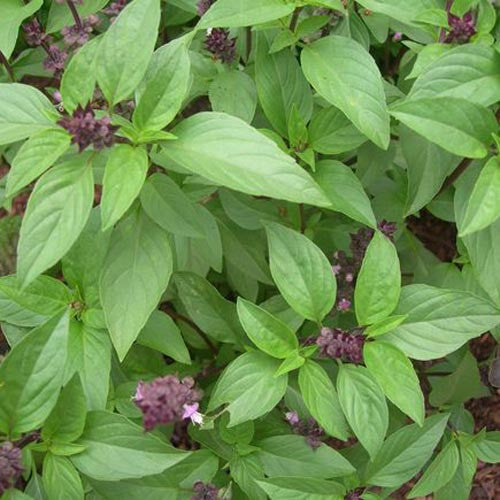Siam Queen
Family
Lamiaceae
Native
South East Asia
Environment
Thai Tulsi is a tropical plant but it still dislikes direct sunlight. So, do not keep your basil plant at a spot where the sun is beating down. Indirect sunlight is best for basil plants.
Tulsi likes lots of moisture in the soil. So you need to water it at least 2 times daily in summers and once in winter. If the basil plant is out in the sun, then it needs more water than the indoor plants.
Basil needs soil that can retain moisture. That is why black soils with high amounts of clay matter are good for tulsi plants. The most basic thing you must know to care for basil plants is that they need to be in a moist soil that can keep them well supplied with water for many hours.
The plant doesn't need much fertilizer but if you want aromatic basil, then you need to give organic manure.
Once the basil plant starts sprouting flowers, not only it will its leaves lose the flavour but it will also stop growing. Prune the flowers as soon as they appear.
Description
Siam Queen is more tender and intensely flavored than Sweet Basil. This extra-large Basil sports purple blooms on sturdy, large-leaved plants.Compact plants sport relatively small green leaves with dark purple stems and blossoms. Leaves are 2 long and plants reach 12-18 tall. Clusters of small, intensely colored deep purple flowers appear on the very top of the plant, for a highly ornamental effect
Its highly aromatic, licorice-basil aroma is more stable at high and extended cooking temperatures than other basils. Commonly used in Thai cooking as well as Italian recipes.
Landscape Uses
Superb as a container herb plant on the patio or you could try growing basil on the kitchen windowsill and in convenient containers outside the back door.














